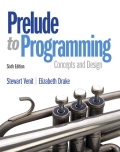Part 4 - Positions (positions.html) At the end of this section, you will have a webpage that looks and functions like the webpage in the video below (white and green lines are fixed, the white car sticks to the top of the viewport instead of leaving the viewport on scroll): I used a mix of sticky, relative and absolute positions to achieve the effect demonstrated above. Your job is to replace the default selectors in sticky.html with correct selectors. You will need to explore the HTMLand prewritten style rulesto do this. Hint: use process of elimination o ex: the line on the left side is green • look in the style sheet for a rule that could create a green line on the left side • look in the html to see if there is an element you can match with that rule • finally, modify that rule's selector, refresh your browser to confirm that the CSS rule was applied to that element
<!DOCTYPE html>
<html lang="en">
<head>
<meta charset="UTF-8">
<meta http-equiv="X-UA-Compatible" content="IE=edge">
<meta name="viewport" content="width=device-width, initial-scale=1.0">
<title>Part 4 - Positions</title>
<style>
/* element selector */
replace-me {
font-size: 10px;
margin: 0;
background-color:#414046;
}
/* class selector */
.replace-me {
position: fixed;
left: 4em;
top: 0;
background-color: white;
width: 4em;
height: 100vh;
}
/* class selector */
.replace-me {
position: fixed;
right: 4em;
top: 0;
background-color: white;
width: 4em;
height: 100vh;
}
/* class selector */
.replace-me {
position: fixed;
right: 0;
top: 0;
background-color: green;
width: 4em;
height: 100vh;
}
/* class selector */
.replace-me {
position: fixed;
left: 0;
top: 0;
background-color: green;
width: 4em;
height: 100vh;
}
/* class selector */
.replace-me {
background: url('./images/white-car.png');
background-repeat: no-repeat;
background-size: cover;
transform: rotate(180deg);
position: sticky;
margin-top: 50em;
top: 0;
left: 20%;
width: 20em;
height: 40em;
float: left;
}
/* General sibling combinator */
.replace-me ~ .replace-me {
position: relative;
background: url('./images/red-car.png');
background-repeat: no-repeat;
background-size: cover;
margin-top: 5em;
top: 0;
right: 20%;
width: 20em;
height: 40em;
float: right;
}
/* General sibling combinator */
.replace-me ~ replace-me {
background-color: #EFB700;
border-radius: 2px;
margin: 4em auto;
width: 4em;
height: 10em;
}
</style>
</head>
<body>
<div class="left-grass"></div>
<div class="left-side"></div>
<div class="right-side"></div>
<div class="right-grass"></div>
<div class="car-left">
</div>
<div class="car-right">
</div>
<div>
</div>
<div>
</div>
<div>
</div>
<div>
</div>
<div>
</div>
<div>
</div>
<div>
</div>
<div class="car-right">
</div>
<div>
</div>
<div>
</div>
<div>
</div>
<div>
</div>
<div>
</div>
<div>
</div>
<div>
</div>
<div>
</div>
<div>
</div>
<div>
</div>
<div>
</div>
<div>
</div>
<div>
</div>
<div>
</div>
<div>
</div>
<div class="car-right">
</div>
<div>
</div>
<div>
</div>
<div>
</div>
<div>
</div>
<div>
</div>
<div>
</div>
<div>
</div>
<div>
</div>
<div>
</div>
<div>
</div>
<div>
</div>
<div>
</div>
<div>
</div>
<div>
</div>
<div>
</div>
<div>
</div>
<div>
</div>
<div>
</div>
<div>
</div>
<div>
</div>
<div>
</div>
<div>
</div>
<div>
</div>
<div>
</div>
<div>
</div>
<div>
</div>
<div>
</div>
<div>
</div>
<div>
</div>
<div>
</div>
<div>
</div>
<div>
</div>
<div>
</div>
<div>
</div>
<div>
</div>
<div>
</div>
<div>
</div>
<div>
</div>
<div>
</div>
<div>
</div>
<div>
</div>
<div>
</div>
<div>
</div>
<div>
</div>
<div>
</div>
<div>
</div>
<div>
</div>
<div>
</div>
<div>
</div>
<div>
</div>
<div>
</div>
<div>
</div>
<div>
</div>
<div>
</div>
<div>
</div>
<div>
</div>
<div>
</div>
<div>
</div>
<div>
</div>
<div>
</div>
<div>
</div>
<div>
</div>
<div>
</div>
<div>
</div>
<div>
</div>
</body>
</html>
![**Part 4 – Positions (positions.html)**
At the end of this section, you will have a webpage that looks and functions like the webpage in the video below (white and green lines are fixed, the white car sticks to the top of the viewport instead of leaving the viewport on scroll):
[Diagram Description: The image displays a road with a centered divider marked by dashed yellow lines. A white car is positioned on the left lane, and a red car is on the right lane. The white lane on the left and the green line on the right are fixed in place, demonstrating the effect of sticky elements. This illustrates the goal for web page design where specific elements remain in a fixed position even as the page scrolls.]
To achieve the effect demonstrated above, a mix of sticky, relative, and absolute positions is used. Your task is to replace the default selectors in `sticky.html` with the correct selectors. You will need to explore the HTML and prewritten style rules to do this.
**Hint:**
- Use the process of elimination:
- Example: The line on the left side is green
- Look in the style sheet for a rule that could create a green line on the left side
- Look in the HTML to see if there is an element you can match with that rule
- Finally, modify that rule’s selector, refresh your browser to confirm that the CSS rule was applied to that element](/v2/_next/image?url=https%3A%2F%2Fcontent.bartleby.com%2Fqna-images%2Fquestion%2F117b64c2-8536-4e17-ab28-e4c8e07cdfee%2F1c527777-a788-4aa5-8047-29020aaa5dc8%2F8xxdl8r_processed.png&w=3840&q=75)
Step by step
Solved in 3 steps









